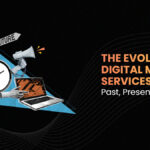Imagine you’re hiring for a new position in your company. Your aunt’s daughter has just graduated with top honours, and she’s eager to join your team. But then, you come across a candidate online who has an impressive portfolio, highlighting their skills and experience. Who do you choose?
While it may be tempting to hire someone you know or are related to, it’s important to prioritize talent over-familiarity. In today’s global marketplace, having a diverse and skilled workforce is essential for success. A workplace that values talent, regardless of familial connections or other biases, is more likely to be innovative, productive, and successful.
In this blog, we’ll explore why a diverse and inclusive workplace matters, and why hiring based on pure talent is the smart choice. From increased creativity and better decision-making to improve employee morale and engagement, the benefits of a diverse workplace are clear. So, forget about the familiar faces and instead focus on building a team that brings together different backgrounds, experiences, and perspectives.
What does a diverse and inclusive workplace mean?
It means promoting an atmosphere that welcomes diversity and encourages participation from individuals of all backgrounds, including those who may be traditionally underrepresented. In a truly diverse and inclusive workplace, employees feel comfortable being themselves and bringing their whole selves to work. They are not judged or discriminated against based on factors such as their race, gender, sexual orientation, religion, marital status, age, disability, or any other characteristic. Rather, they are recognized for their unique talents and contributions and given equal opportunities to succeed and grow.
One example of a non-inclusive workplace practice is asking job applicants about their marital status or family plans. Such questions can be used to make assumptions about an applicant’s commitment to work, the potential for taking time off, or perceived priorities. In many cases, this type of inquiry is directed primarily at women, who are often unfairly presumed to prioritize their families over their careers.
These assumptions and biases harm women’s career opportunities and earning potential. They also perpetuate harmful stereotypes and gendered expectations, which can create a hostile work environment and contribute to the gender wage gap.
In Canada and many other countries, laws are in place to protect individuals from workplace discrimination based on factors such as age, gender, race, religion, sexual orientation, and marital status. These laws provide clear guidance on what constitutes discrimination and set out penalties for employers who violate these protections.
Here are a few steps that can be taken for an inclusive work environment.
Unconscious Biases…
One important aspect of creating an inclusive work environment is recognizing and addressing unconscious biases. Everyone has unconscious biases or implicit associations and attitudes that affect their behaviour and decision-making without them even realizing it. These biases can lead to discrimination and exclusion of individuals who don’t fit the dominant culture or norms of the workplace.
Educate and understand.
To enhance inclusivity, it’s important to train employees and leadership on unconscious bias and how to mitigate its effects. This can involve workshops, training, and educational resources that help employees understand how their biases can affect their interactions with others and how to overcome them.
Do it on Purpose.
Another way to enhance an inclusive work environment is to actively seek out and embrace diversity in hiring and promotion processes. This means intentionally seeking out candidates from diverse backgrounds and making sure that the selection process is fair and unbiased. It also means promoting diversity at all levels of the organization, including leadership positions.
Communicate!
Creating a culture of open communication and feedback is also essential for enhancing inclusivity. Encouraging employees to share their thoughts, ideas, and concerns can help identify issues that need to be addressed and foster a sense of belonging and ownership in the workplace. Providing regular opportunities for feedback and input, such as employee surveys and focus groups, can also help ensure that everyone’s voices are heard and valued.
Celebrate Diversity
Celebrating diversity and promoting cultural awareness is another way to enhance inclusivity in the workplace. This can involve organizing events and initiatives that highlight the diverse backgrounds and experiences of employees, such as cultural heritage months, diversity fairs, and volunteer opportunities. Celebrating and embracing diversity can help build a sense of community and foster a more inclusive workplace culture.
Key benefits of a diverse and inclusive workplace
Increased Innovation
Get ready for some fresh ideas! A diverse team brings together people with different backgrounds, experiences, and perspectives, leading to increased creativity and innovation. It’s like having your brainstorming squad!
Improved Decision making
Want to better understand and serve your diverse customers? Having a range of perspectives from a diverse team allows for more informed decision-making that considers the needs and preferences of different groups.
Employee engagement
When employees feel valued and respected, they’re more likely to be motivated and engaged. An inclusive workplace culture fosters a sense of belonging and positivity that can translate into better work.
Rise in Productivity
An inclusive work environment where everyone feels included and supported is more likely to lead to increased productivity. When your team is performing at their best, you’ll see the results in your bottom line.
A good reputation
Finally, promoting diversity and an inclusive work culture can also help build a positive reputation for your business. Customers and clients are increasingly looking to work with companies that share their values, and a commitment to diversity and inclusion is a great way to show that you care about the community and the world around you.
So there you have it! Building a diverse and inclusive work culture is not only the right thing for your team, but it’s also good for business. An inclusive work environment is not just a feel-good idea, it’s a must-have for modern organizations. After all, diversity isn’t just a checkbox to tick off, it’s an invaluable asset that drives innovation, creativity, and growth. By promoting a culture of inclusivity, organizations can tap into the unique perspectives and talents of their diverse workforce, which can help them stay ahead of the curve in a rapidly changing world. So, let’s ditch the old-school biases and embrace the power of inclusivity – not just for the sake of our employees, but for the success of our organizations as well.



